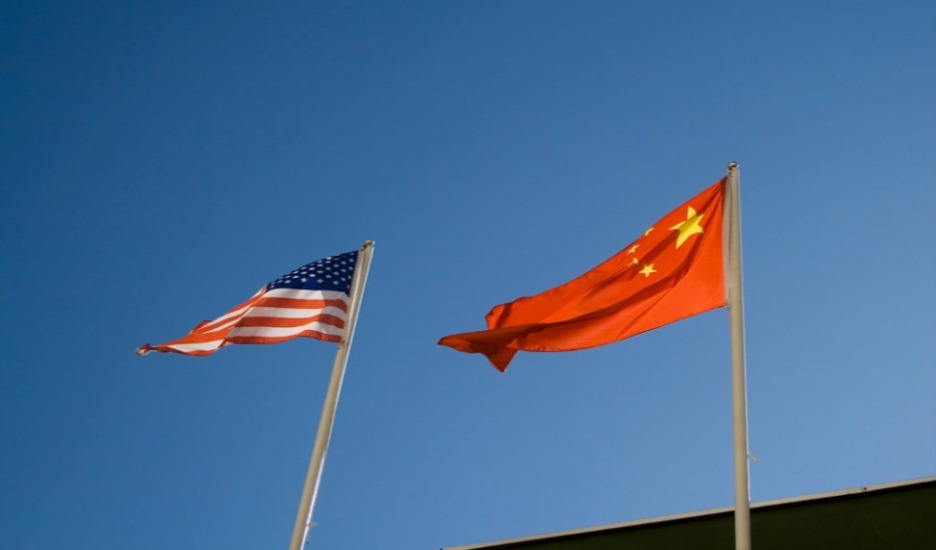In Trade War With China, U.S. Can’t Get Out of Its Own Way
“Trade wars are good, and easy to win,” President Trump proclaimed in March. But amid ongoing trade tensions with China, it is not at all obvious what qualifies as a “win” in the president’s book.
Published by The Lawfare Institute
in Cooperation With

“Trade wars are good, and easy to win,” President Trump proclaimed in March. But amid ongoing trade tensions with China, it is not at all obvious what qualifies as a “win” in the president’s book. In public statements, he has targeted a long list of issues: the bilateral trade deficit and loss of American manufacturing jobs; discriminatory regulations and barriers to market access faced by U.S. companies in China; theft of U.S. intellectual property and forced technology transfer through a mix of Chinese espionage and industrial policy; and China’s dumping of steel and aluminum on the global market as a national security threat. Add to this a confusing back-and-forth between the Commerce Department, the president and Congress over whether to follow through on a law-enforcement penalty that would have effectively put Chinese telecom giant ZTE Corporation out of business, and the net result is a stew of concern without clarity about how to protect U.S. national security and economic welfare—two interests that are increasingly indistinguishable.
It is tempting to sort through this morass by pointing to President Trump’s generalized concerns over past U.S. trade policy or the inevitability of U.S.-China rivalry—attributing every move in the trade spat to the natural expression of indeterminate presidential preferences or an emerging bipartisan consensus on the need to “get tougher” with China. Other tempting narratives are more partisan: the clash between those who support protecting American workers and those who lament the undermining of the rules-based trading system that has benefited American consumers and companies alike.
Yet these simple explanations may cloud a more complicated reality: As the United States escalates its trade war with China, Beijing is already reaping strategic benefits from the tumult. In voicing disdain for the World Trade Organization—or actively undermining it, as the case may be—and levying tariffs against U.S. allies, the Trump administration has aided China’s effort to portray itself as a responsible stakeholder in the rules-based trading system of which the United States was the principal architect.
The opportunity to pose as the adult in the room hasn’t been lost on Beijing. At least one source close to Chinese decision makers has said that the government is actively preparing for an “economic cold war” and is framing its tensions with the U.S. as a choice between China, whose leaders want to strengthen the WTO, and Trump, who wants to destroy the global trade order. Thus Chinese President Xi Jinping’s recent attacks on “protectionism, isolationism and populism” and his government’s release of a white paper purporting to defend its record of WTO compliance.
European Union and Chinese officials are pushing ahead on negotiations toward an investment agreement, signaling that they are working to expand economic engagement with or without the United States. During this month’s annual China-EU Leaders’ Summit, the EU and China committed to establishing a joint working group to propose WTO reforms and to cooperate on implementation of the Paris climate change accord. Trump’s recent statements have encouraged this unlikely partnership: He has labeled both Chinese and European steel and aluminum imports a national security threat and accused both the EU and China of currency manipulation at the expense of U.S. trade interests. German Chancellor Angela Merkel recently responded to Trump’s threat of tariffs on German auto imports with her own warning about countermeasures and an accusation that the U.S. tariffs would violate WTO rules and pose “a real threat to the prosperity of many in the world.”
This is not to suggest the situation is now “America versus the world.” Far from it: The EU isn’t eager to let China off the hook for unfair trade practices. At the recent WTO Trade Policy Forum, representatives from the EU, Australia and Japan seemed to be singing from the U.S. hymnal in calling out China’s barriers to market access and insufficient protection of intellectual property rights. Indeed, the EU is banking that negotiations toward an investment agreement will pressure China to modify some of the same policies that have rankled the United States. Moreover, President Trump’s apparent agreement last week with European Commission President Jean-Claude Juncker—to table threatened tariffs on European auto imports and to reconsider existing tariffs on steel and aluminum—indicates cooler heads may ultimately prevail in the trade clash between the United States and its European trading partners.
Still, the fact remains that the United States’ pursuit of trade distractions risks squandering an opportunity to catalyze substantial changes in Chinese policy. U.S. allies broadly share Washington’s concerns about China’s unfair trade practices—whether those practices violate the letter or simply the spirit of the WTO. Even many Chinese economists and officials quietly admit that, for its own interests, China needs major trade and investment reforms in line with those advocated by the U.S. and EU. Despite these advantages, Washington is struggling mightily to control the trade-war narrative on multiple fronts. To understand why, a brief recap is in order.
There are four areas of escalated U.S. trade activity that implicate Chinese imports.
First, on Jan. 22, the Trump administration imposed safeguard tariffs on $8.5 billion worth of solar panels and $1.8 billion worth of washing machines from China. This move was the result of an investigation by the U.S. International Trade Commission under Section 201 of the Trade Act of 1974, which provides authority for safeguard tariffs where an import causes “injury” to a U.S. industry. China retaliated in April with 178.6 percent antidumping duties on U.S. sorghum. Beijing withdrew those duties in May when the two sides began negotiations.
Second, on March 1, President Trump announced that he would impose tariffs on steel and aluminum imports on the grounds that such imports threaten to impair U.S. national security. The tariffs (25 percent on steel and 10 percent on aluminum) applied to multiple countries—including U.S. allies Canada, Mexico and the EU. They were the outcome of an investigation under Section 232 of the Trade Expansion Act of 1962, which found that Chinese steel and aluminum overcapacity (a product of China’s market-distortive industrial policies) is flooding the global market with cheap metals and threatening U.S. domestic industries critical to defense. Notably, only 6 percent of the tariffs under Section 232 directly touch Chinese imports; that’s roughly $689 million worth of imports, a drop in the bucket for China. On April 2, China retaliated with tariffs on $2.4 billion worth of U.S. products.
Separately, in May, the Commerce Department launched another Section 232 investigation into imported automobiles and automobile parts. The president had made clear his desire to levy tariffs on auto imports even before the investigation concluded.
Third, on March 22, the Office of the United States Trade Representative released an extensive report of its investigation into China’s policies and practices related to intellectual property and technology transfer under Section 301 of the Trade Act of 1974. The report identifies four categories of Chinese practice that are “unreasonable and discriminatory and that burden U.S. commerce,” per the terms of the 301 statute: forced technology transfer from U.S. to Chinese companies through joint venture requirements and equity limitations, among others; discriminatory technology licensing restrictions for U.S. companies operating in China; state-directed investment and acquisition of U.S. companies and technologies to achieve large-scale tech transfer; and widespread cyber-enabled theft of intellectual property and trade secrets. Trump announced three actions in conjunction with the report: a new case at the WTO against China specific to its discriminatory licensing practices; a directive that the Treasury Department consider imposing restrictions on Chinese investment in the United States, initially contemplated under the authority of the International Emergency Economic Powers Act but later (wisely) deferred in favor of legislative reform to strengthen the Committee on Foreign Investment in the United States (CFIUS), which reviews foreign investment for national security implications; and tariffs on Chinese imports.
The tariff tit-for-tat under the auspices of Section 301 is ongoing. On April 3, the president published a list Chinese products that may be subject to 25 percent tariffs, amounting to $46.2 billion in imports. On April 4, China announced its own list, encompassing $49.8 billion of U.S. exports to China. The U.S. administration responded the next day by proposing an additional $100 billion in additional tariffs. In May, Treasury Secretary Steve Mnuchin indicated that the tariffs would be held until the next month, and on June 15, the USTR released a revised set of proposed tariffs for imposition on July 6. On cue, China responded with its own new list of imports to be targeted after July 6. The United States then announced a 10 percent tariff on an additional $200 billion in goods from China to be imposed sometime after August. On July 16, China filed a WTO complaint targeting this new tariff list. The United States has also filed disputes in the WTO against the retaliatory tariffs imposed by China, the EU, Canada, Mexico and Turkey in response to the Section 232 steel and aluminum tariffs. And on July 20, President Trump indicated that he is willing to up the ante and impose tariffs on $500 billion worth of Chinese imports.
In hindsight, it is clear that the Trump administration’s steel and aluminum tariffs were merely a taste of what was to come. Insufficient attention has been given to how this sideshow has undercut the credibility of the Trump administration’s other tariff announcements. First, the employment of the Section 232 tariffs suggested that Trump was willing to blow up the tacit understandings at the heart of the WTO—in this case, the understanding that countries will sparingly deploy the General Agreement on Tariffs and Trade Article XXI exception to WTO disciplines for actions taken in a nation’s “essential security interests.” Second, it suggested the Trump administration was willing to do so on the basis of tendentious reasoning about the national security risks of steel and aluminum imports. Finally, by describing U.S. allies as national security threats, the Trump administration alienated those allies and all but ensured that they would join China in filing a WTO complaint against the United States and in condemning the United States as a trade scofflaw.
In short, when it was time to bring to the fore China’s long-standing misdeeds—its closed economy, its discriminatory enforcement regime, its theft of U.S. intellectual property and policies to pressure foreign companies to transfer their technology to China—the United States had already been cast as a (if not the) lead trade malefactor. This narrative gathered strength when the White House ordered the reversal of a Commerce Department denial order against Chinese telecom company ZTE that would have effectively put the company out of business by cutting it off its supply of U.S. semiconductors. The subsequent spat between the White House and Congress—implicating congressional concerns about ZTE as a threat to U.S. national security—raised more questions about whether the Trump administration’s approach to negotiations with China was grounded in the unfair policies outlined in the USTR’s 301 report or in a more general concern about the scale of the trade deficit that might be amenable to a “quick fix” deal (such as the reported pledge by China to buy more American goods). Other congressional gestures—including a resolution about expanding congressional authority over national-security-based tariffs that amounted to little more than a finger wag—similarly served to weaken the administration’s credibility on trade and to distract from core concerns about China’s unfair trade practices.
The administration’s diminished standing in this realm adds further fuel to criticism that its tariffs are bound to backfire. Some analysts point out that by targeting Chinese electronic and computer products, the tariffs are more likely to harm U.S. multinational companies producing such goods in China. Others criticize the tariffs more generally as a tax that will hurt the very people they are intended to help. Still others assess that China is no longer as dependent as it once was on the U.S. export market, and in any event can readily shift to other markets such as (you guessed it) Europe.
In short, without the full-throated support of the EU and other allies sharing U.S. concerns about Chinese trade and investment policies, and with a credibility shortfall that encourages talk of U.S. national security pretextualism at the expense of the more persuasive USTR case against China, the prospects for succeeding in this trade conflict are less optimistic than they could and should be. That is, if success means getting China to back off its alleged “economic aggression” by making big, painful structural changes in its economic and foreign policy. That seems to be how people like Treasury Secretary Mnuchin define success. But what does President Trump want?



.jpg?sfvrsn=5a43131e_9)


